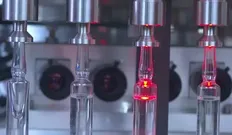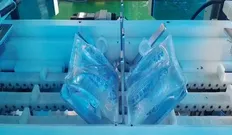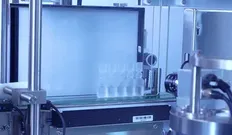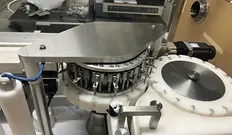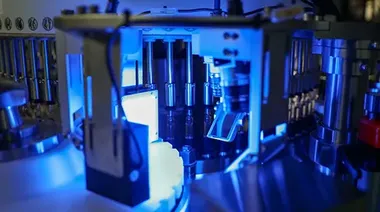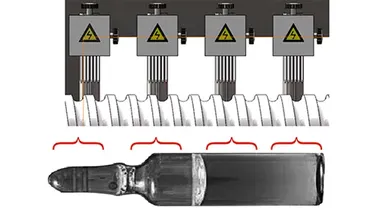Detection Principle
The system applies a high-frequency, high-voltage power source (denoted as V in the diagram), connected to both the emitter and receiver electrodes.
Capacitors C1 and C2 represent the capacitance formed between the electrodes and the solution, with the container wall acting as an insulating barrier (no direct contact occurs). R is the resistance of the liquid inside the container.
By comparing the resulting current flow, the system determines whether a container is leaking.
To accurately compare current values, the signal is sampled, converted into digital form for computer analysis, and evaluated. Any defective product is automatically recorded and rejected.
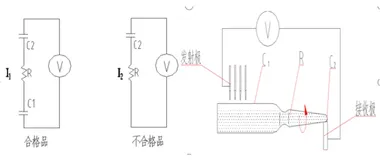
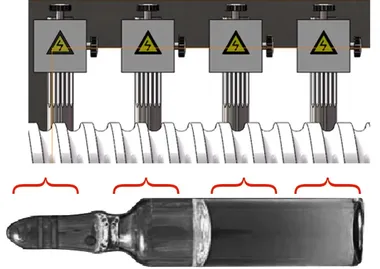
Advantages
- High efficiency: When paired with a servo motor, HVLD enables automated, in-line inspection of each container with real-time data logging.
- High accuracy: Capable of detecting ultra-fine cracks and micro-leaks (as small as 0.2 µm), far beyond the capabilities of traditional methods. It also provides consistent, repeatable results.
- High safety: The energy applied to the container is low and for a very short duration. The liquid inside remains unaffected, and compliant products are completely insulated during inspection. This ensures both the product and the container are tested non-destructively.
- Zero contamination: The electrodes do not come into direct contact with the product, ensuring the contents remain sterile and uncontaminated.

